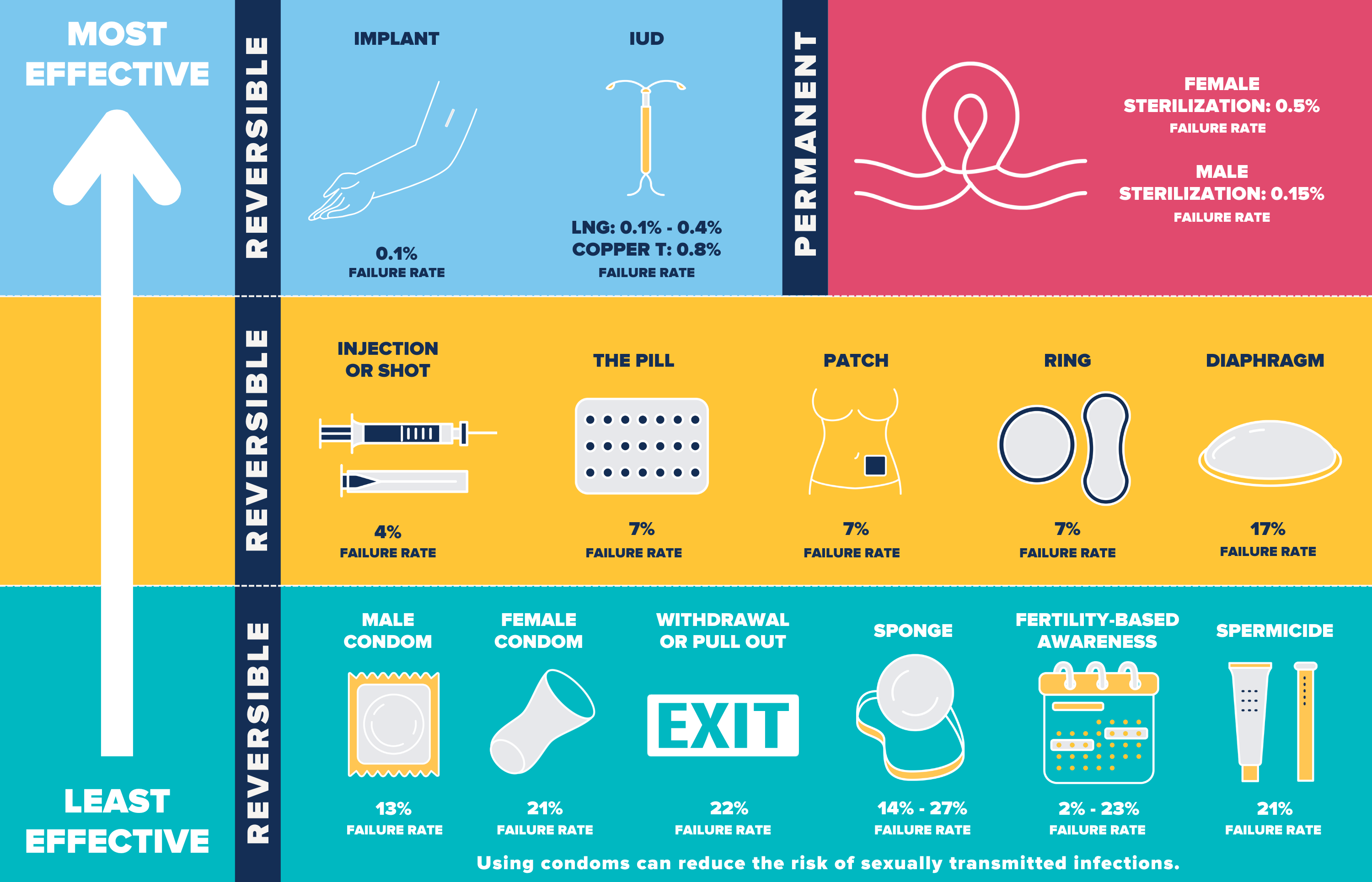
Pregnancy Contraception: A Comprehensive Guide
Introduction
Pregnancy contraception, also known as birth control, is a method or device used to prevent pregnancy. It allows individuals to control their fertility and plan their families. With numerous options available, choosing the most suitable contraceptive can be overwhelming. This comprehensive guide will provide an in-depth overview of pregnancy contraception, including its types, effectiveness, and potential side effects.
Types of Pregnancy Contraception
Barrier Methods
- Condoms (male and female): Thin sheaths that cover the penis or line the vagina to prevent sperm from reaching the egg.
- Diaphragm and cervical cap: Dome-shaped devices that fit over the cervix to block sperm.
- Sponge: A soft, round sponge containing spermicide that is inserted into the vagina before sex.
Hormonal Methods
- Birth control pills: Oral contraceptives that contain hormones to prevent ovulation or thicken cervical mucus.
- Contraceptive patch: A small patch applied to the skin that releases hormones through the skin.
- Contraceptive ring: A flexible ring inserted into the vagina that releases hormones.
- Contraceptive injection: A shot given every three months that contains hormones to prevent ovulation.
- Implant: A small rod inserted under the skin of the upper arm that releases hormones for up to three years.
Intrauterine Devices (IUDs)
- Copper IUD: A T-shaped device inserted into the uterus that releases copper to prevent fertilization.
- Hormonal IUD: A T-shaped device inserted into the uterus that releases hormones to prevent ovulation.
Emergency Contraception
- Plan B: A pill taken within 72 hours of unprotected sex to prevent pregnancy.
- Ella: A pill taken within 120 hours of unprotected sex to prevent pregnancy.
Effectiveness of Pregnancy Contraception
The effectiveness of pregnancy contraception varies depending on the method used. The following table provides an overview of the typical failure rates:
| Method | Failure Rate |
|---|---|
| Condoms | 13% |
| Diaphragm | 12% |
| Sponge | 20% |
| Birth control pills | 9% |
| Contraceptive patch | 9% |
| Contraceptive ring | 9% |
| Contraceptive injection | 0.2% |
| Implant | 0.05% |
| Copper IUD | 0.8% |
| Hormonal IUD | 0.2% |
| Plan B | 75% |
| Ella | 85% |
Potential Side Effects of Pregnancy Contraception
While pregnancy contraception is generally safe and well-tolerated, some side effects may occur. These vary depending on the method used and may include:
- Barrier methods: Irritation or discomfort
- Hormonal methods: Nausea, breast tenderness, mood changes, irregular bleeding
- IUDs: Cramping, pain, irregular bleeding
- Emergency contraception: Nausea, abdominal pain, irregular bleeding
Choosing the Right Contraceptive
The best contraceptive for an individual depends on their specific needs and preferences. Factors to consider include:
- Effectiveness: The desired level of protection against pregnancy.
- Convenience: The ease of use and frequency of use.
- Side effects: The potential for side effects and their severity.
- Medical history: Any underlying health conditions that may affect contraceptive use.
- Personal preferences: Individual preferences and beliefs.
Consulting a Healthcare Professional
It is crucial to consult a healthcare professional before choosing a pregnancy contraceptive. They can provide personalized guidance, discuss the available options, and address any concerns. Regular follow-up appointments are also recommended to ensure the contraceptive is working effectively and to monitor for any side effects.
Conclusion
Pregnancy contraception is an essential tool for individuals who wish to control their fertility and plan their families. With a wide range of options available, there is a contraceptive suitable for every need. By understanding the types, effectiveness, and potential side effects of pregnancy contraception, individuals can make informed decisions about their reproductive health. Consulting a healthcare professional is key to finding the best contraceptive and ensuring its safe and effective use.